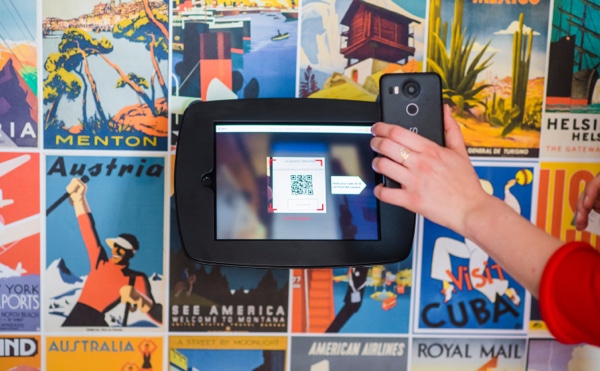The idea that technology can be configured to drastically improve the delivery and usability of finance began taking off following the financial crisis of 2008, when consumer distrust for traditional banks combined with the increasing popularity and functionality of smartphone apps. Although fintech, short for “financial technology”, originally began as a back-end system where businesses could improve internal processes, it has since grown to become an integral part of consumers’ daily lives. In fact, EY’s annual fintech report [pdf] states that one-third of consumers use two or more fintech platforms every day.
The growing success of fintech is due to its emphasis on a concept that had previously been absent from consumer banking: the customer experience. By targeting consumers that were unsatisfied with their banking experiences, fintech has developed a mass following by appealing to the consumer desire for easier and more time efficient systems to carry out financial transactions, manage finances, obtain advice, and make investments. For example, Venmo, a popular and fast growing fintech service in America, has developed a solution to the arduous process of bank transfers by building a social media platform that people can use to transfer money with the click of a button. They have even taken it a step further by allowing users to transfer funds to their bank account more or less instantly for an additional fee. By identifying pain points in the customer experience and alleviating them with a quick-and-easy digital platform, fintech firms have rapidly gained popularity and are massively transforming the traditional financial services industry.
Brick-and-mortar financial institutions are facing major disruption as the provision of fintech services is now an expectation, rather than an optional benefit that they can provide their customers. Online banking technologies like mobile deposits, digital balance checking, and locking accounts in real-time have become standard practice, and so a lack of these common functionalities results in unsatisfied customers. As elevated customer experience is now the norm, brick-and-mortar financial institutions are not just falling behind, but are failing to meet expectations. Well-funded fintech startups are able to adapt to new customer expectations by anticipating demands, whereas traditional banks are unable to keep up with the changing landscape. With over 40% of people in the United States using mobile banking, this is a major area where banks are competing to enhance the customer experience. For organizations that lack the necessary financial or intellectual capital to keep up with the shift to mobile banking, they are losing out to new competitors as their efforts to maintain existing customer relationships wither and die on the vine. As 73% of financial sector executives [pdf] believe that consumers are likely to choose new financial services from Google, Apple, Amazon, Paypal, or Square rather than from their own nationwide bank, it’s evident that only the most technologically savvy will remain competitive in a digitized market.
In order to keep up with the constant disruption in consumer banking, financial institutions need to ensure that they develop the solutions that will satisfy the needs of consumers, while also closely monitoring upcoming trends and technologies. PwC, in their report on fintech’s reshaping of banking [pdf], suggests that although there is not a single strategy that all banks can follow, there are three universal steps that can assist banks in keeping up with consumer’s digital expectations:
- Create a simplified digital platform that removes friction from the user experience and is easily operable, preventing potential consumer frustration caused by confusion, delay or faulty systems.
- Make all digital systems accessible through an omnichannel experience, rather than offering different streams with different user interfaces, passwords, and functionality.
- Collaborate with fintech firms in order to keep up with customer expectations.
By focusing on an improved customer experience and integrating financial technology into their current systems, consumer banks have the potential to stay competitive in the modern digital landscape.
Lexi Sisko is currently attending the University of North Carolina at Chapel Hill, pursuing majors in both Economics and Sociology. Her interests include the intersection between economic policy and social repercussions, the disruption of financial technology on brick-and-mortar financial institutions, and the future of AI.
Image: Unsplash
References:
EY(2017) EY FinTech Adoption Report 2017.[Online]. Available from: https://www.ey.com/Publication/vwLUAssets/ey-fintech-adoption-index-2017/$FILE/ey-fintech-adoption-index-2017.pdf
Kagan, Julia (2019) What is Fintech?[Online]. Available from: https://www.investopedia.com/terms/f/fintech.asp
Nasdaq (2016) Millennials And Banking: How Old Banking Is Dying And New Banking Is Dominating[Online]. Available from: www.nasdaq.com/article/millennials-and-banking-how-old-banking-is-dying-and-new-banking-is-dominating-cm717051.
PwC (2016)Customers in the Spotlight: How Fintech is Reshaping Banking. [Online]. Available from: https://www.pwc.com/jg/en/publications/fin-tech-banking-2016.pdf
Statista (2018) Mobile Banking in the United States. [Online]. Available from: https://www.statista.com/topics/2614/mobile-banking/
Wintermeyer, Lawrence (2017) FinTech, The Financial Crisis And The Smartphone.[Online]. Available from: https://www.forbes.com/sites/lawrencewintermeyer/2017/08/31/fintech-the-financial-crisis-and-the-smartphone/#69d04f3127af
